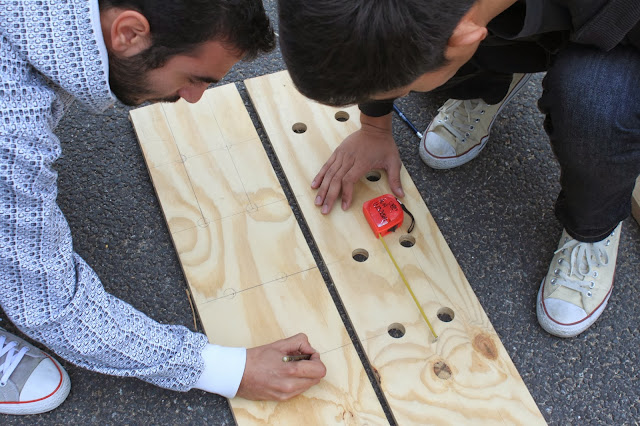Today we started early by cutting the plywood pieces off the panels into equal ones. One of the problems we encountered was that the measurements of the panel were exactly divided into 6 equal pieces but we didn't take into consideration the width of the saw blade which was 2mm and eventually cost us 1 piece on each panel. Truth be told, the edges of the plywood were not usable anyway so there was n drawback in the whole process.
 |
| Cutting the plywood panels on the vertical saw |
 |
| 1 of the 6 pieces is in such a bad condition that we can't use it anyway |
We made some calculations and drew the first lines on the timber only to discover that we would require dowels to complete our design. Therefore, we decided that two people could go to B&Q for some dowels and the rest of the group could stay back at uni to start drilling the holes.
 |
| Sketching our plans for the correct measurements of the holes |
 |
| Alignment is crucial |
We used 28mm holes and dowels to give more structural integrity to the module but we found out the hard way that when you manually cut and drill timber pieces and expect them to perfectly stack on each other one can never be completely sure that they will. Even less than 1mm difference in between the holes proved to be disastrous for assembling the pieces together.
 |
| Or module rises for the first time |
The angle of entry of the dowel plays an important role in the assembly process and if the holes are not perfectly aligned it can prove to be a big problem.
For tomorrow we need to reflect more on the mistakes of the present and think of an alternative way to make the assembling process easier and more achievable. Our first course of action is to drill a 30mm hole still using the 28mm dowel thus sacrificing structural integrity and risking of making the post a bit flimsy.







No comments:
Post a Comment